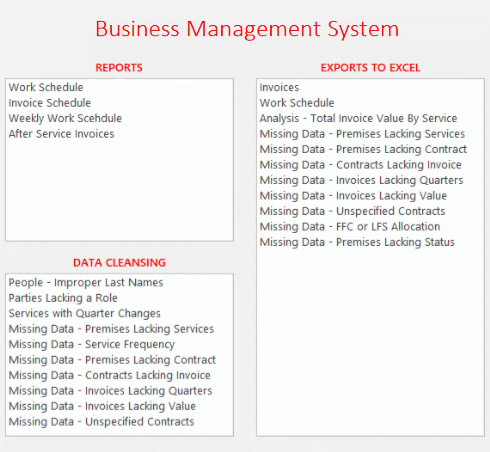
Excel vba examples data management code#

If RowsCount = 0 Then CriteriaRowsSet = i - 1 Else CriteriaRowsSet = CriteriaLastRow 'Checks to see if any row returns 0 and sets it to the row above's numberĬriteriaRange:=Range("C2:F" & CriteriaRowsSet), _ CopyToRange:=Sheets("Sheet2").Range("A1:D1") This will filter the data from Sheet 1 into Sheet 1 in the range A1:D1:ĬriteriaLastRow = 4 'Last Row you have in the Criteria rangeįor i = 3 To CriteriaLastRow 'Loops through until the last Row Here’s what the final code should look like.And add CopyToRange:=Sheets("SHEET NAME").Range("RANGE") to the end.We need to change Action:=xlFilterInPlace to Action:=xlFilterCopy.To alter the VBA to copy to a new location we simply need to change 2 parts of the code: You can use operators within the cell such as: You don’t need to have every header – just the ones you want to filter by.Note: The headers need to match the headers from the database exactly.You can rename your table by clicking anywhere on the new table and editing the text where it says ‘Table1’.To set up a table, simply select the range of cells including the headers and click Insert → Table.This can be set up as a range of cells or as a table.The criteria range are the rules that will be applied to the data when using the VBA Advanced Filter. No blank rows can be in the data set (apart from the last row at the bottom).The rows below the headers should contain the data you wish to filter.Each header needs a unique name otherwise it will cause issues when filtering.Set up a table or arrangement of data with header names.I will be using a blue table for the Data Range, and green for the Criteria Range, as shown in the screenshots below. Here are the steps for setting up the data ready for advanced filtering.
Excel vba examples data management how to#
In this article, we will be using VBA to control advanced filtering – but first, we need to show you how to build and setup your document so it is ready for VBA advanced filtering.

You can filter out unique items, extract specific words or dates and even copy them to another document or sheet. VBA advanced filtering is used for more complex filtering needs that the AutoFilter in Excel cannot complete.


 0 kommentar(er)
0 kommentar(er)
